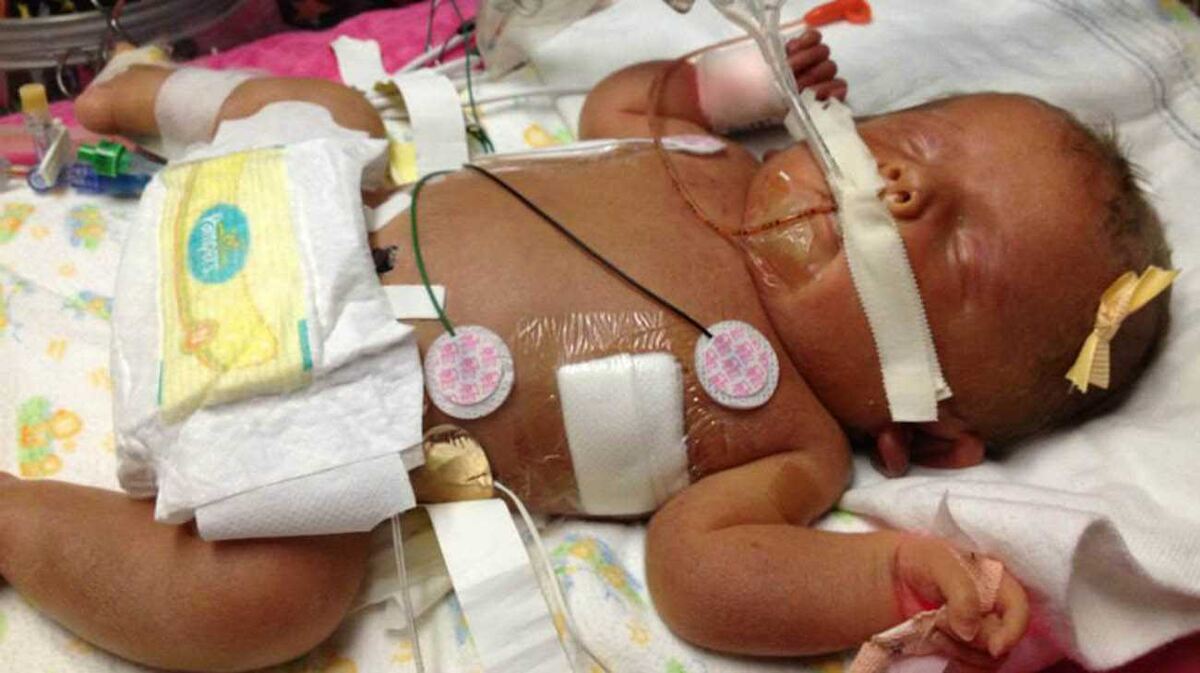Introduction
Hydrops fetalis is a serious condition characterized by an abnormal accumulation of fluid in a newborn’s tissues, including around the lungs, heart, and abdomen. Affecting approximately 1 in 1,000 births, this life-threatening complication often arises from underlying health issues that disrupt the body’s fluid balance. Pregnant women may notice symptoms such as excess amniotic fluid, a large placenta, and abnormal fluid accumulation around fetal organs, typically identified through ultrasound. Effective management of hydrops fetalis involves early diagnosis, possible prenatal interventions, and specialized treatments both before and after birth to improve survival chances for the baby.
1.What is hydrops fetalis?
Hydrops fetalis is a serious, life-threatening health problem in which an abnormal amount of fluid accumulates in the tissues around a newborn’s lungs, heart or abdomen, or under the skin. It is a complication of another medical condition that affects the way the body regulates water. Hydrops fetalis occurs in only one in every 1,000 births. If you are pregnant and your baby has hydrops fetalis, your doctor may induce early labor and delivery. A baby born with hydrops fetalis may need blood transfusions or other treatments to drain the excess water. Despite treatment, more than half of babies with hydrops fetalis die shortly before or after birth.
2.Symptoms of hydrops fetalis
Pregnant women may experience the following symptoms if the newborn has hydrops fetalis. Click on this link to get in touch with an expert dietitian for a healthy postnatal diet chart. An excess of amniotic fluid or polyhydramnios, a thick or abnormally large placenta, fluid around the spleen, heart, or liver in the newborn, and fluid around the heart or lungs may also be observed during ultrasound. If you are also suffering from these symptoms during pregnancy, click here to consult an expert and reliable gynecologist. A baby born with hydrops fetalis may have symptoms such as pale skin, sores, severe swelling especially in the abdomen, enlarged liver and spleen, difficulty breathing, severe jaundice. In case of these symptoms, consult a pediatrician. Contact here to apply.
3.Treatment of hydrops fetalis before birth
Prenatal treatment of babies with hydrops fetalis begins with getting information about the severity and underlying cause of the disease as early as possible. A complete health history of the mother will be obtained, screening for infections or other causes related to the mother’s health that can lead to anemia and hydrops fetalis in the newborn. Specialists will also collect information through the use of several different technologies such as high-resolution Fetal ultrasonography, fetal echocardiography and amniocentesis. The tests should always be done by a qualified laboratory as the diagnosis and treatment of the possible disease depends on the results of the test, click here to choose the best fetal echocardiography.
4.Treatment of hydrops fetalis during pregnancy
Hydrops fetalis usually cannot be treated during pregnancy. Occasionally, a doctor may give the baby a blood transfusion, such as an intrauterine fetal blood transfusion, to help increase the baby’s chances of surviving to birth. In most cases, a doctor will need to deliver the baby as soon as possible to give the baby the best chance of survival. This can be done with early labor medications or with a C-section. The doctor will discuss these options with the patient.
5.Hydrops fetalis treatment after childbirth
Following childbirth may include the following treatments: Using a needle to remove excess fluid from the space around the lungs, heart, or abdomen Breathing aids, such as using a breathing machine ventilator Medicines to control heart failure Supplementation of the kidneys Medicines to help with dehydration. To get the services of expert and reliable doctors for the treatment of congenital children suffering from this disease, refer here. For immune hydrops, the child may receive a direct transfusion of red blood cells that match his blood type. If hydrops fetalis is caused by another medical condition, the baby will also receive treatment for that condition. For example, antibiotics are used to treat sexually transmitted bacterial infections. The baby may also need an operation to treat the underlying cause of hydrops fetalis.
Conclusion
Hydrops fetalis poses significant risks to both the mother and the newborn, necessitating prompt and comprehensive medical care. While treatment options during pregnancy are limited, timely delivery and postnatal care can provide critical support. Advances in prenatal technology and treatments, including blood transfusions and surgery, offer hope for better outcomes. Understanding the symptoms, causes, and available treatments can empower expectant parents to seek timely medical advice and support, ultimately improving the chances for a healthier outcome for their baby.


Leave feedback about this